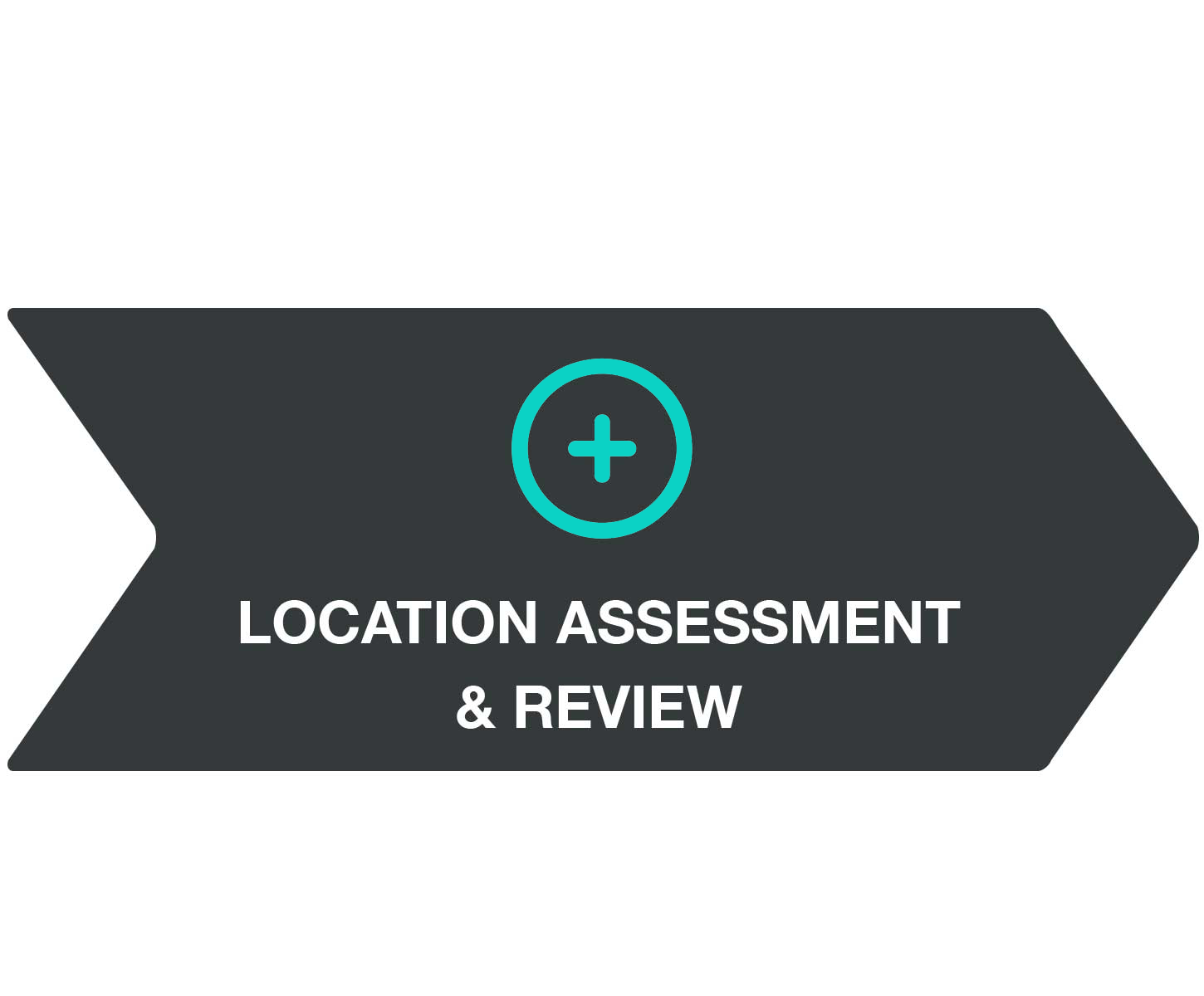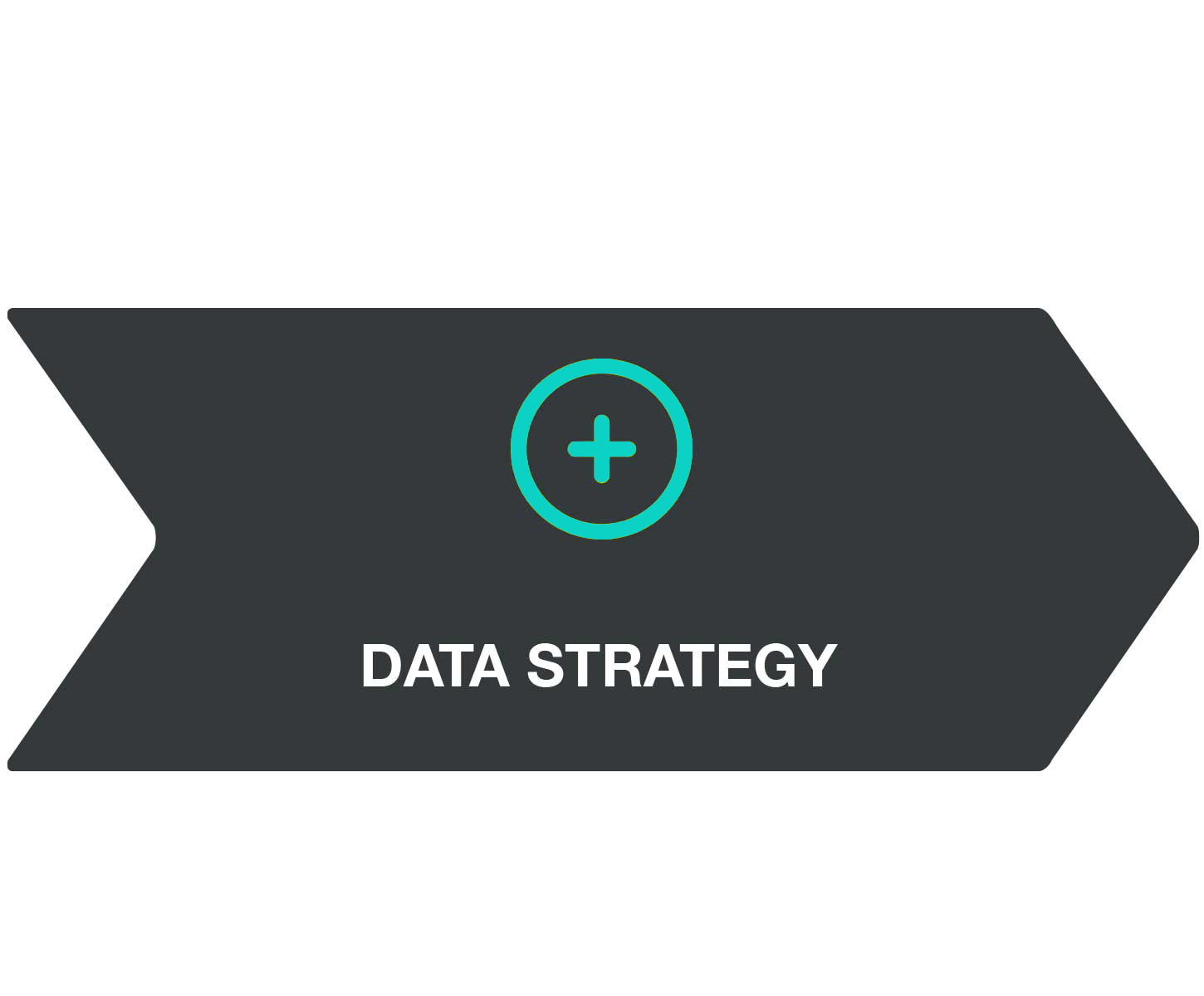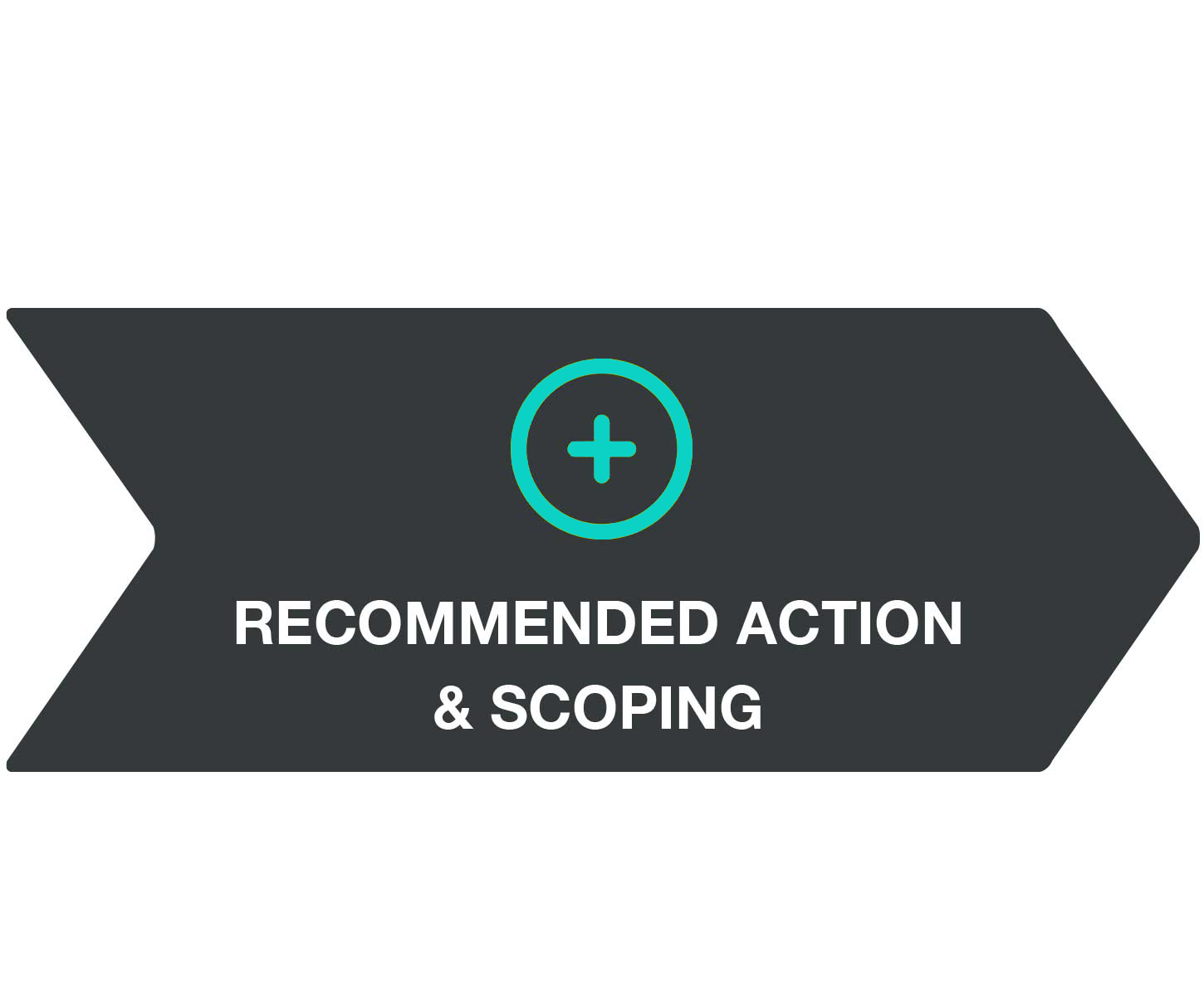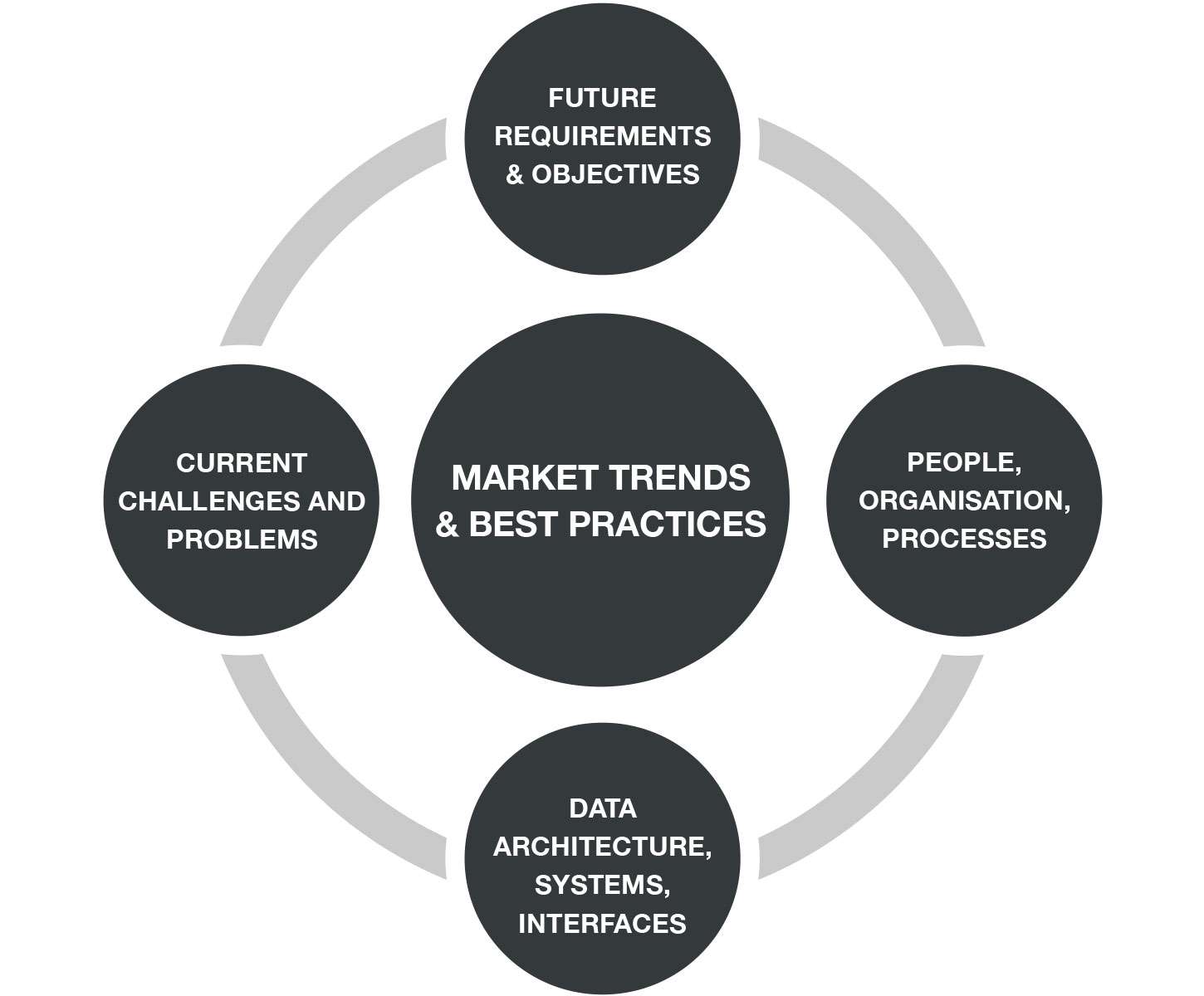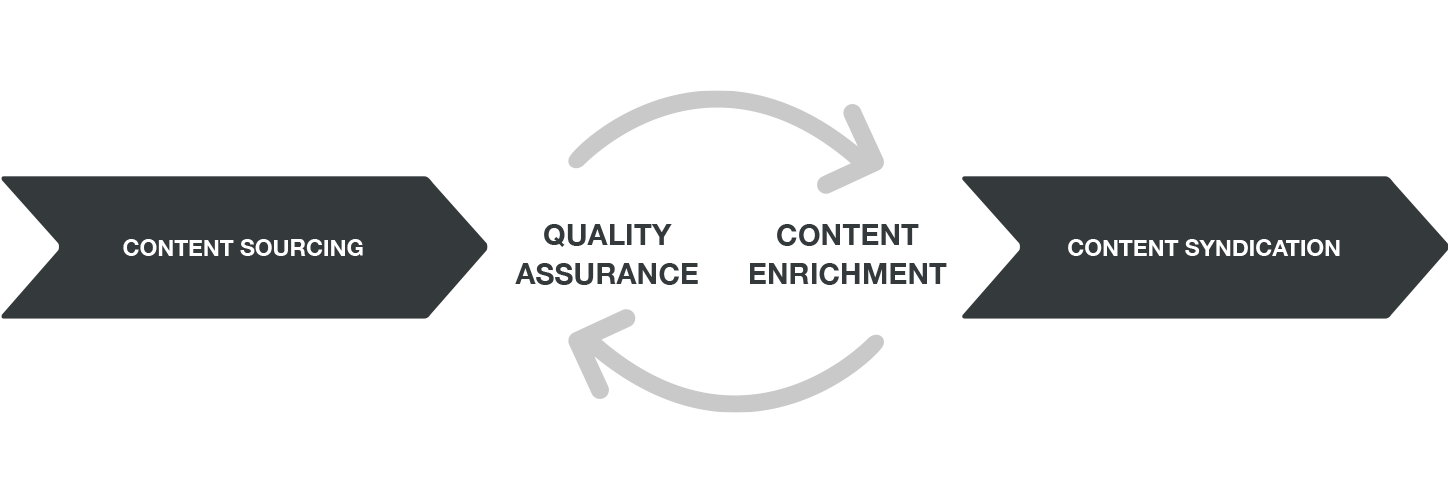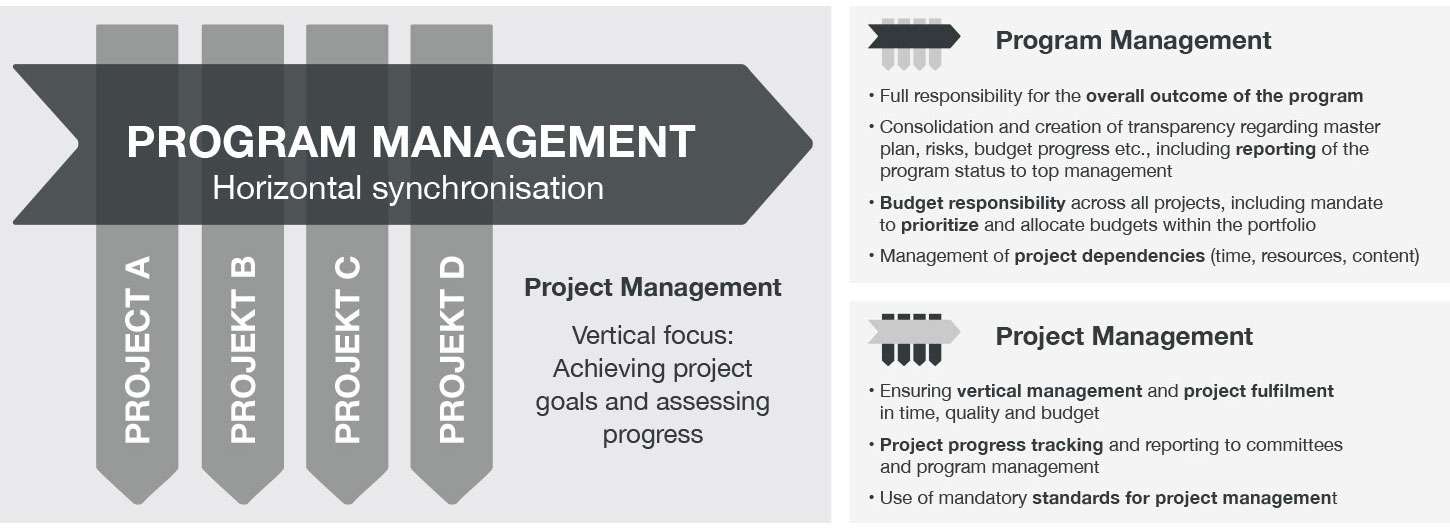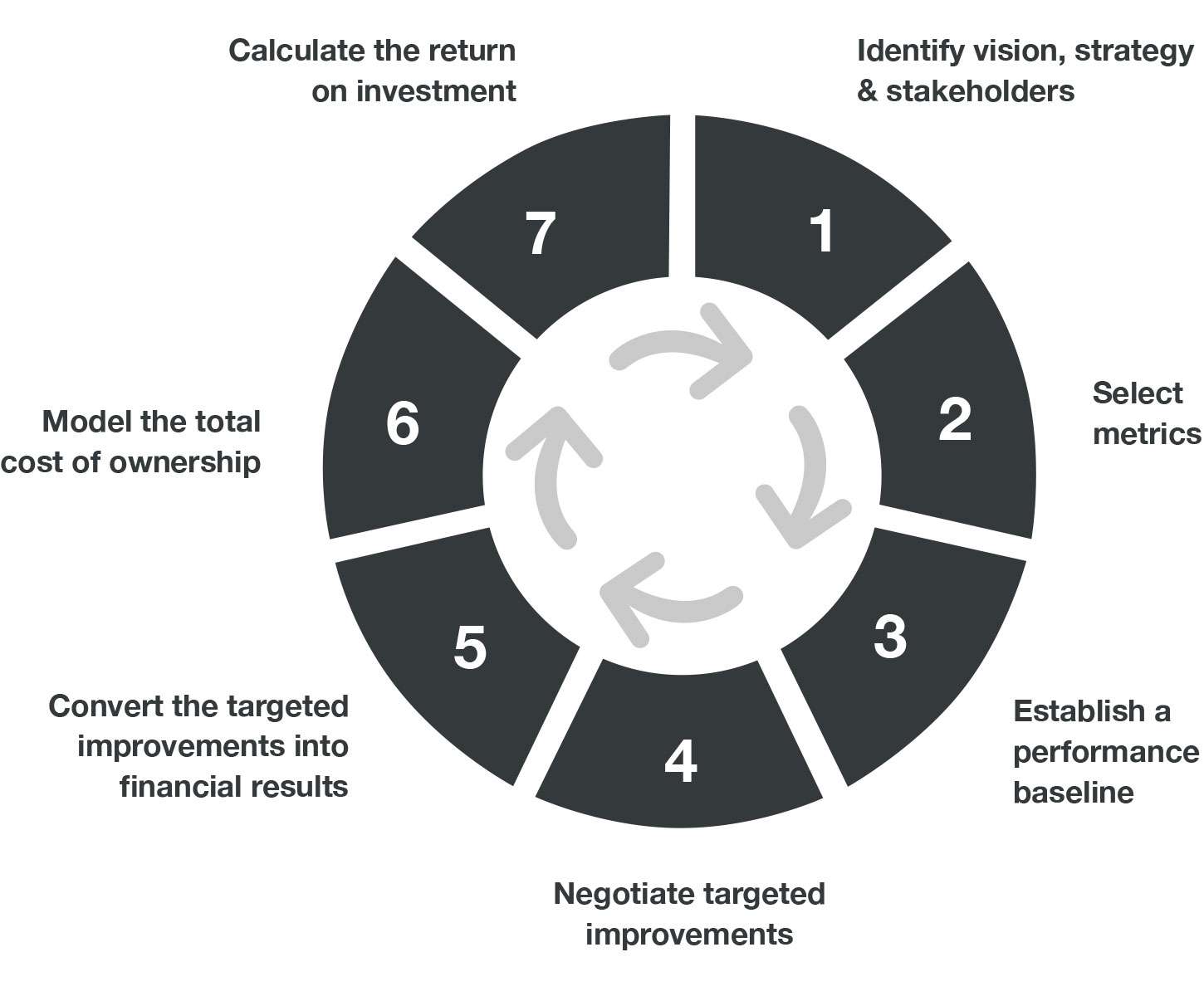Strategy development
In order to develop or improve your product data strategy, it is necessary to first determine and review your current situation. Based on current pain points, future requirements and best practices, we can then develop a data strategy that fits your needs. By comparing this data strategy with your current location, we then determine the fields of action and jointly draw up an implementation plan.
»In the beginning there is the strategy«
Data strategy
We develop your new data strategy along the following key process phases:
- Content sourcing: Where does the data originally come from?
- Quality assurance: How do you ensure data quality and what does data quality actually mean for your business?
- Content enrichment: How do you enrich data?
- Content syndication: To whom do you distribute data and how?
Program support
Example: Your new PIM system has to be connected to SAP. Decentralized maintenance of product information should be centralized. In logistics, the role of the data steward shall be introduced. All these projects are interdependent and should be consolidated in one program and their dependencies should be managed.
Business Case
Setting up a business case is initially quite simple – 7 steps and the business case is set. However, as is often the case, the devil lies in the details – and in this case it lies in step 2 'Select metrics'.
Which benefits should my program provide? Is data management really the only area to become more efficient? Or should data quality also be improved? And if data quality is to be improved, which benefits will this bring? For example, logistics wants to know the dimensions of products and packaging units in order to optimize warehouse utilization and route planning. This leads to measurable cost savings, which have to be considered in your business case.
Or should marketing content improve in quality in order to be more SEO-relevant and lead to higher conversions in your online store? Your benefit: higher sales turnover!
With our experience, we support you in quickly and reliably identifying the right benefit levers for your business case and in setting it up correctly.
Benefit from our experience
Contact us – no matter which project phase you currently find yourself in. We are happy to support you with our experience.
